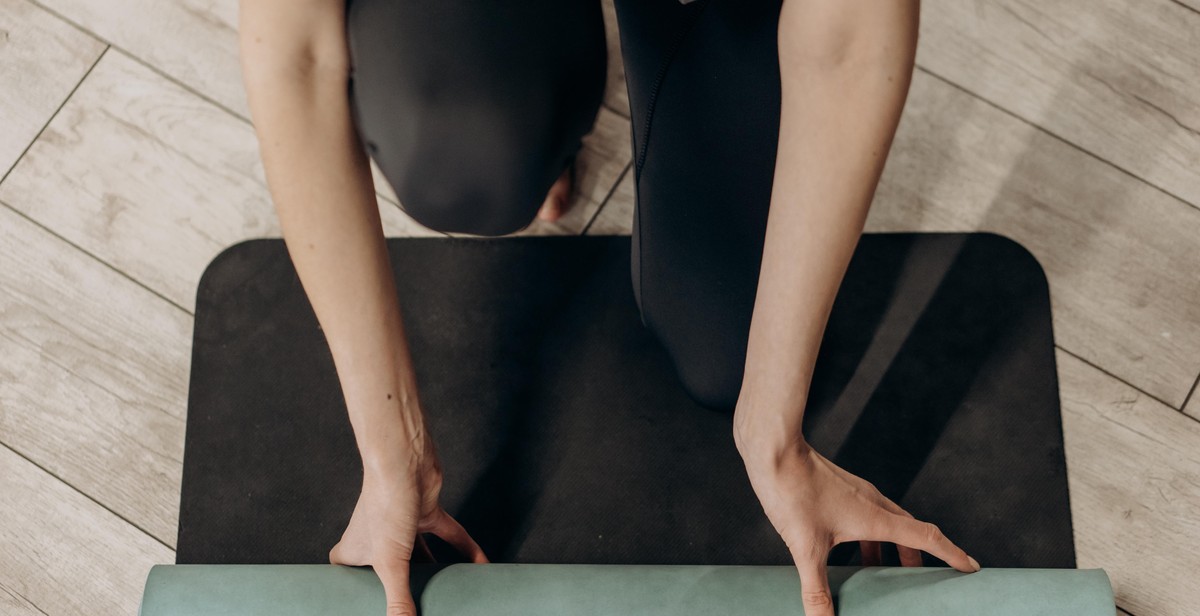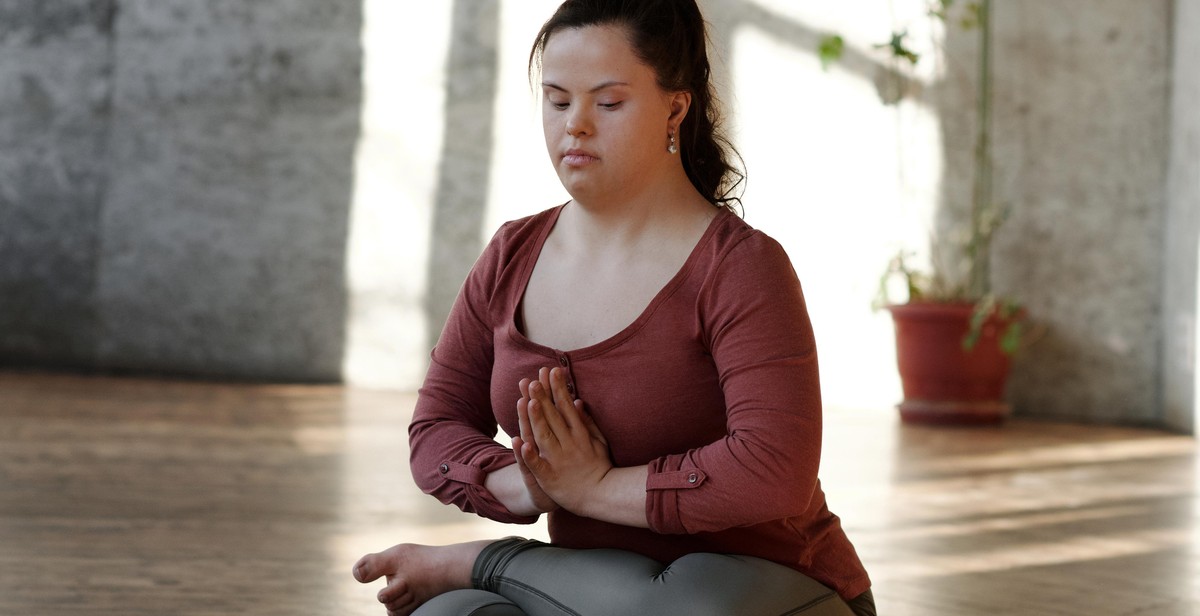How to Use Meditation for Improving Posture
Posture refers to the way we hold our bodies while standing, sitting, or lying down. It is important because good posture can help prevent injuries, reduce muscle strain, and improve breathing and circulation. On the other hand, poor posture can lead to chronic pain, headaches, and even digestive problems.
Meditation, on the other hand, is a practice that involves training the mind to focus and achieve a state of calmness and relaxation. It has been used for centuries to improve mental and physical health, reduce stress and anxiety, and increase overall well-being.
What is Meditation?
Meditation is a mental exercise that involves focusing your attention on a particular object, thought, or activity to achieve a state of calmness and relaxation. It can be practiced in various forms, including mindfulness meditation, mantra meditation, and visualization meditation.
How Does Meditation Help with Posture?
Meditation can help improve posture in several ways. First, it can increase body awareness, which can help you identify and correct poor posture habits. Meditation can also reduce stress and tension in the muscles, allowing them to relax and release any tightness that may be contributing to poor posture. Additionally, meditation can improve breathing and circulation, which are essential for maintaining good posture.
By incorporating meditation into your daily routine, you can improve your posture and overall well-being. In the following sections, we will explore some meditation techniques that can help you achieve better posture.

Step 1: Mindful Breathing
Mindful breathing is a simple yet powerful technique that can help improve your posture. It involves paying attention to your breath and taking slow, deep breaths to calm your mind and body. This technique can help you reduce stress and tension in your body, which can contribute to poor posture.
How to Practice Mindful Breathing
To practice mindful breathing, find a quiet and comfortable place where you can sit or lie down. Close your eyes and take a few deep breaths, inhaling through your nose and exhaling through your mouth.
As you breathe, focus your attention on the sensation of your breath moving in and out of your body. Notice the rise and fall of your chest and the feeling of the air passing through your nose and mouth.
If your mind starts to wander, gently bring your attention back to your breath. You can also try counting your breaths to help you stay focused.
The Benefits of Mindful Breathing for Posture Improvement
Mindful breathing can help improve your posture in several ways. First, it can help you become more aware of your body and any tension or discomfort you may be experiencing. This awareness can help you make adjustments to your posture to reduce any strain or pressure on your muscles and joints.
Second, mindful breathing can help reduce stress and tension in your body, which can contribute to poor posture. When you are stressed, your muscles tend to tense up, which can lead to stiffness and discomfort. By practicing mindful breathing, you can help release this tension and promote relaxation in your body.
Finally, mindful breathing can help improve your overall mental and emotional well-being. By focusing your attention on your breath and letting go of any distracting thoughts, you can create a sense of calm and inner peace. This can help you feel more centered and balanced, which can translate to better posture and overall physical health.
Overall, practicing mindful breathing is a simple yet effective way to improve your posture and promote overall well-being. By making this technique a regular part of your routine, you can start to experience the many benefits of mindfulness and meditation.

Step 2: Body scan meditation
Body scan meditation is an effective technique to improve your posture. This meditation helps you to become more aware of your body and its sensations. It also helps you to release any tension or stress that might be causing discomfort or pain in your body. Here’s how to perform a body scan meditation:
1. Find a comfortable position
Find a comfortable position to sit or lie down in. Make sure your body is supported and you’re not feeling any discomfort. You can use cushions or blankets to make yourself more comfortable.
2. Close your eyes
Close your eyes and take a few deep breaths. Focus on your breath and let go of any thoughts or distractions.
3. Start at the top of your head
Start at the top of your head and slowly scan down through your body. Notice any sensations you feel in each part of your body. Don’t judge or analyze the sensations, just observe them.
4. Release any tension
If you notice any tension or discomfort in any part of your body, take a deep breath and consciously release the tension. Visualize the tension leaving your body with each exhale.
5. Move slowly
Move slowly through each part of your body, taking your time to observe any sensations and release any tension.
6. End at your feet
End at your feet and take a few deep breaths. Notice how your body feels now that you’ve completed the body scan meditation.
You can perform a body scan meditation anytime you need to release tension or become more aware of your body. It’s a great way to improve your posture and overall well-being.

Step 3: Yoga and Meditation for Posture Improvement
Yoga and meditation are two powerful tools that can help improve your posture. Practicing yoga regularly can help you strengthen and stretch your muscles, while meditation can help you become more aware of your body and your posture. By combining these two practices, you can create a powerful routine that will help you improve your posture and overall health.
Yoga Poses for Posture Improvement
There are many yoga poses that can help improve your posture by strengthening and stretching your muscles. Some of the best yoga poses for posture improvement include:
- Mountain Pose: This pose helps improve overall posture by aligning the spine and improving balance.
- Downward-Facing Dog: This pose stretches the hamstrings and back muscles, which can help improve posture and relieve tension in the spine.
- Cobra Pose: This pose strengthens the back muscles, which can help improve posture and relieve back pain.
- Warrior II Pose: This pose strengthens the legs and stretches the hips, which can help improve posture and relieve lower back pain.
How to Combine Yoga and Meditation for Posture Improvement
To combine yoga and meditation for posture improvement, start by finding a quiet and comfortable place to practice. Begin with a few minutes of meditation to help you become more aware of your body and your posture. Focus on your breath and try to let go of any tension or stress in your body.
Next, move into a few yoga poses that are specifically designed to improve posture. Hold each pose for several breaths and focus on your alignment and posture. Try to maintain a sense of calm and relaxation throughout your practice.
After your yoga practice, take a few minutes to sit in meditation again. Focus on your breath and try to maintain the sense of calm and relaxation you cultivated during your yoga practice. This will help you carry the benefits of your practice into your daily life and improve your posture over time.
| Benefits of Yoga and Meditation for Posture Improvement |
|---|
| 1. Strengthening and stretching muscles |
| 2. Increased body awareness |
| 3. Improved balance and coordination |
| 4. Reduced stress and tension in the body |
| 5. Relief from back pain and other posture-related issues |
By practicing yoga and meditation regularly, you can improve your posture and overall health. Incorporate these practices into your daily routine for best results.

Conclusion
Improving posture is an essential aspect of maintaining a healthy body and mind. Poor posture can cause chronic pain, breathing difficulties, and even depression. However, incorporating meditation into your daily routine can help you achieve better posture and lead a more fulfilling life.
Benefits of using meditation for improving posture
- Meditation helps to increase body awareness, which is crucial for maintaining good posture. With regular practice, you become more conscious of your body and can make necessary adjustments to your posture.
- Meditation helps to reduce stress and tension in the body, which can lead to better posture. When you are stressed, your muscles become tense and can cause poor posture. Through meditation, you can release this tension and improve your posture.
- Meditation helps to strengthen the muscles that support good posture. By focusing on your breath and engaging your core muscles during meditation, you can strengthen your back and abdominal muscles, which are essential for maintaining good posture.
- Meditation helps to improve your overall well-being. When you meditate regularly, you become more aware of your body and mind and can make positive changes to your lifestyle. This can lead to better posture, as well as improved physical and mental health.
By incorporating meditation into your daily routine, you can improve your posture and lead a healthier, happier life. Start with just a few minutes of meditation each day and gradually increase your practice over time. With patience and dedication, you can achieve better posture and a more fulfilling life.
